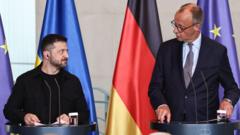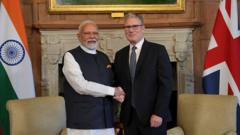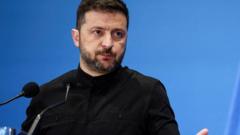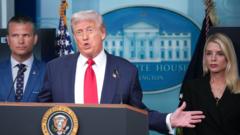On the eve of a pivotal NATO meeting, Germany unveils a significant budget increase, allocating notable funds for military enhancements and infrastructure development to counter economic sluggishness.
Germany Boosts Military Spending and Infrastructure Investments Ahead of NATO Meeting

Germany Boosts Military Spending and Infrastructure Investments Ahead of NATO Meeting
Amid rising geopolitical tensions, Germany announces plans to increase military spending and modernize infrastructure to stimulate its economy.
Germany has revealed its ambitious budget plan that aims to significantly elevate its military spending, moving towards 3.5 percent of its GDP by 2026, alongside a focused effort to address its deteriorating infrastructure. This announcement came just hours before NATO member states convened in The Hague, where discussions were anticipated about a collective commitment to raise military expenditures to 5 percent of GDP.
Historically, Germany has been criticized for underinvesting in both military and public infrastructure relative to its standing as Europe's largest economy. However, the ongoing crisis with Russia and increasing pressure from international allies, particularly from the United States, have prompted German officials to reassess their investment strategies.
In unveiling the draft budget in Berlin, Finance Minister Lars Klingbeil emphasized the transformative nature of this initiative: “What we are doing here is a paradigm shift in investment policy.” The proposed spending heavily relies on borrowing, earmarking a total of €115.7 billion (approximately $134 billion) for 2025’s investments, with €62.4 billion specifically designated for military upgrades.
The strategy is a long-term vision, anticipating continual increases in military funding through 2029, which aligns with NATO's 5 percent requirement that has been vocalized by several key leaders, including former President Trump. As NATO prepares to reinforce its commitment to collective defense, Germany's pivot in spending reflects both a response to external pressures and an acknowledgment of its own strategic interests moving forward.
Historically, Germany has been criticized for underinvesting in both military and public infrastructure relative to its standing as Europe's largest economy. However, the ongoing crisis with Russia and increasing pressure from international allies, particularly from the United States, have prompted German officials to reassess their investment strategies.
In unveiling the draft budget in Berlin, Finance Minister Lars Klingbeil emphasized the transformative nature of this initiative: “What we are doing here is a paradigm shift in investment policy.” The proposed spending heavily relies on borrowing, earmarking a total of €115.7 billion (approximately $134 billion) for 2025’s investments, with €62.4 billion specifically designated for military upgrades.
The strategy is a long-term vision, anticipating continual increases in military funding through 2029, which aligns with NATO's 5 percent requirement that has been vocalized by several key leaders, including former President Trump. As NATO prepares to reinforce its commitment to collective defense, Germany's pivot in spending reflects both a response to external pressures and an acknowledgment of its own strategic interests moving forward.




















